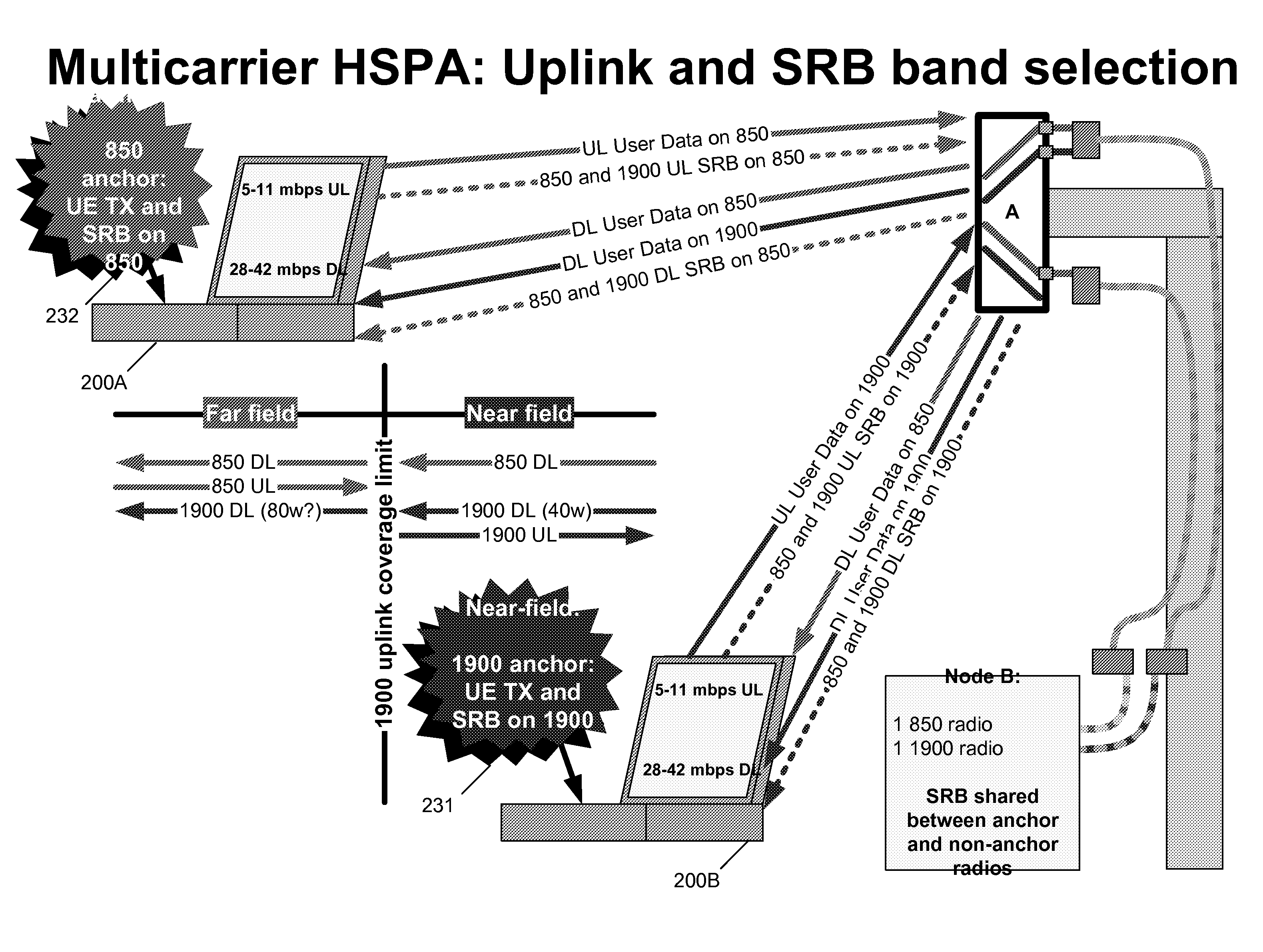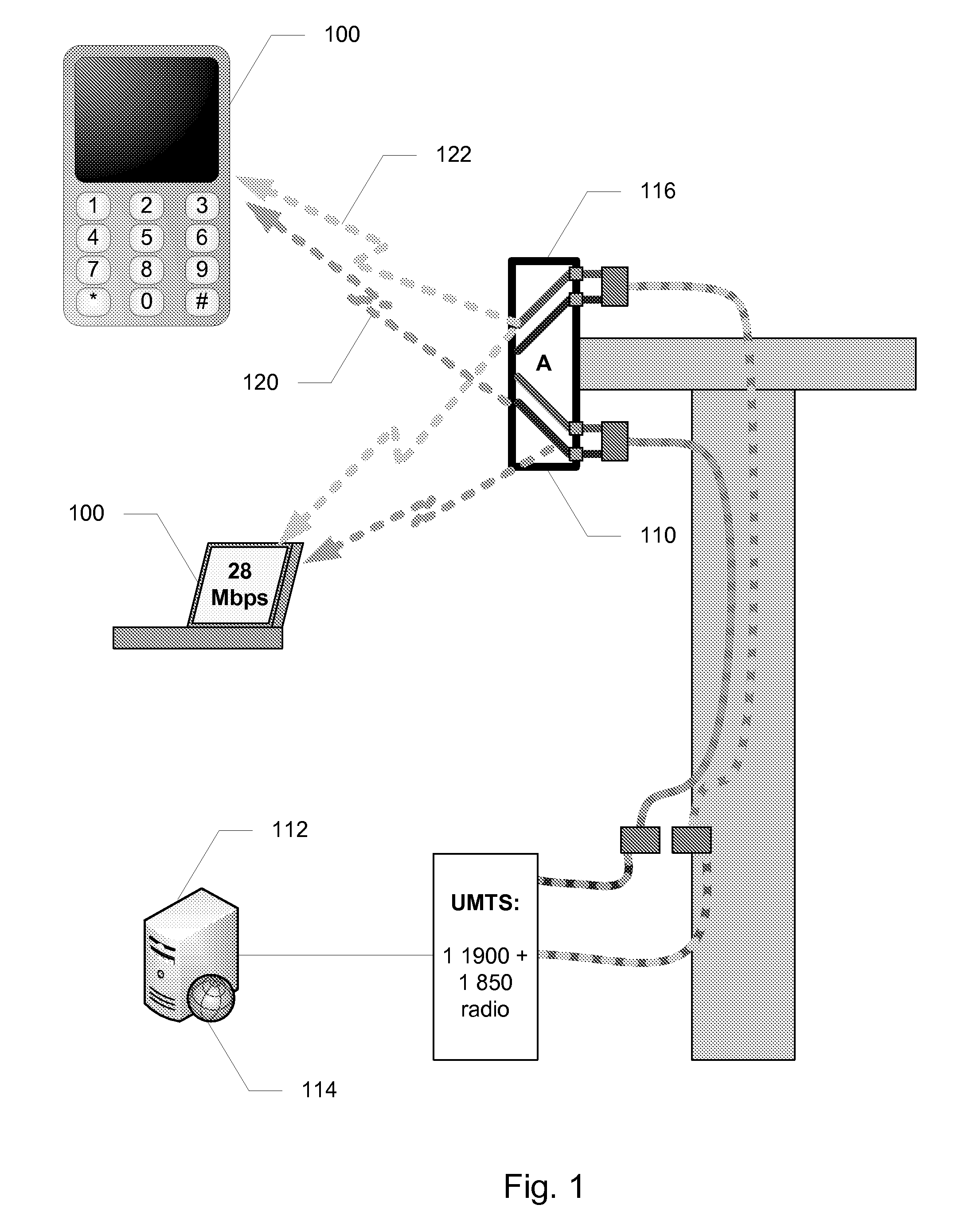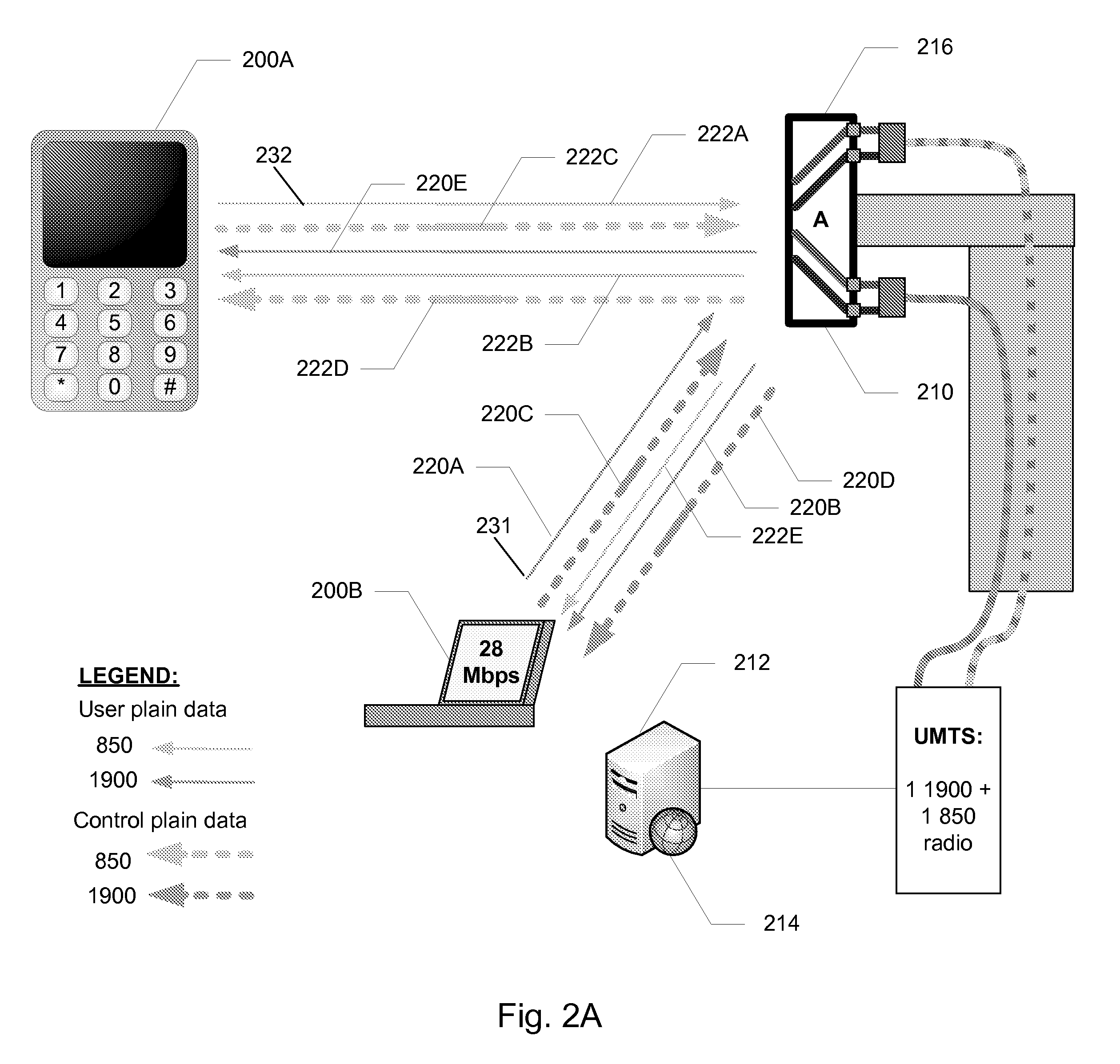Devices and Methods for Asymmetrical Multicarrier Transmission and Reception
a multi-carrier and transmission device technology, applied in the field of data transmission, can solve the problems of reducing the actual gain of bandwidth created, interference in signals, and not the case, and achieve the effect of improving uplink capacity and downlink capacity
- Summary
- Abstract
- Description
- Claims
- Application Information
AI Technical Summary
Benefits of technology
Problems solved by technology
Method used
Image
Examples
Embodiment Construction
[0024]The present invention supplements a duplex frequency by providing one or more simplex frequencies and distributing a data load among them. Embodiments of the present invention include a server containing a scheduler in communication with a communications device. The server initially communicates with the communications device using a duplex channel, or anchor channel. The scheduler determines when it is no longer optimal to use the single duplex channel, and distributes data among the duplex channel and one or more simplex channels. Device feedback of the received data, such as level, quality, load, and various parameter settings are used to balance the transmission across duplex and simplex radio channels. These factors may all contribute to the initial and adapted ratio of data traffic sent on the various channels. Before sending this data through multiple channels, the server must first send a schedule to the communications device, so the communications device knows which b...
PUM
 Login to View More
Login to View More Abstract
Description
Claims
Application Information
 Login to View More
Login to View More - R&D
- Intellectual Property
- Life Sciences
- Materials
- Tech Scout
- Unparalleled Data Quality
- Higher Quality Content
- 60% Fewer Hallucinations
Browse by: Latest US Patents, China's latest patents, Technical Efficacy Thesaurus, Application Domain, Technology Topic, Popular Technical Reports.
© 2025 PatSnap. All rights reserved.Legal|Privacy policy|Modern Slavery Act Transparency Statement|Sitemap|About US| Contact US: help@patsnap.com



